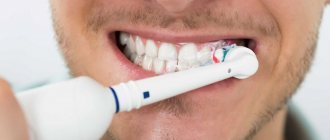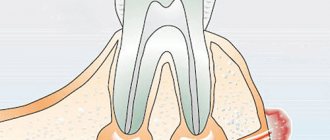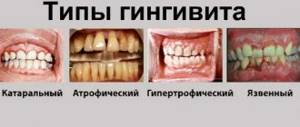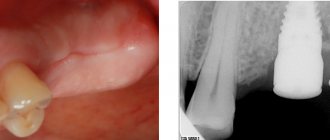Oral hygiene is one of the most accessible and at the same time one of the leading methods of preventing oral diseases. Regular and competent oral care is an integral part of all preventive measures. Mass population surveys conducted in all countries of the world have convincingly shown that systematic oral care has an undoubted preventive value. It is possible to objectively assess the level of oral hygiene only using hygiene indices.
To identify dental plaque in assessing oral hygiene in modern dentistry, objective indicators (indices) are used that characterize the quality and quantity of dental plaque. However, the number of assessment methods, which are based on different numbers of teeth from different functional groups, up to staining all teeth on both sides or collecting and weighing plaque around individual teeth, indicates the relevance of the problem under consideration and the imperfection of existing methods.
Oral hygiene indices.
Method for determining the Fedorov-Volodkina hygienic index // E.M. Melnichenko “Prevention of dental diseases”, Minsk, “Higher School”., 1990, pp. 3-17.
It is determined by the intensity of the color of the vestibular surface of the six lower frontal teeth by applying an iodine-iodide-potassium solution (Schiller-Pisarev liquid).
The calculation is carried out according to the formula:
Ksr (hygiene index) = Kn (total hygiene index for each of the six teeth) / n (number of teeth).
Coloring the entire surface of the crown is scored 5 points, 3/4 of the surface - 4, 1/2 of the surface - 3, 1/4 of the surface - 2 points. If there is no staining, 1 point is given. The indicator is assessed as follows: good index, satisfactory, unsatisfactory, bad, very bad.
However, the proposed method has a number of disadvantages:
— determination of the quality and quantity of dental plaque, assessment of the hygiene index was carried out only on one’s own teeth; — the use of known dyes is impossible when determining the amount of dental plaque on bridges, since these solutions are difficult to wash off from the surface of the dentures.
| Name | Facilities diagnostics | Self-control criteria |
| 1. Fedorov-Volodkina index | Lugol's solution 1.1-1.5 is good 1.6-2.0 - satisfactory 2.1-2.5 - unsatisfactory 2.6-3.4 - bad 3.5-5.0 - very bad | The vestibular surface of the six front teeth of the lower jaw - incisors and canines - is stained with Lugol's solution. Rating on a 5-point system: 5 points – the entire surface of the teeth is stained, 4 points – 3/4 of the tooth surface, 3 points - 1/2 of the tooth surface, 2 points - 1/4 of the tooth surface, 1 point - no staining Then find the arithmetic mean by dividing the sum of the color of all teeth by their number: K av = Kp: p. Good level of hygiene: Ksr=1.0-1.3 b IG = sum of points of six teeth 6. |
| 2. Green-Vermilion Index (1964) - universal hygiene index of the UIG | Schiller-Pisarev solution or Lugol's solution 0-0.6 good 0.7-1.6 satisfactory 1.7-2.5 unsatisfactory 2.6-3 - bad | Determine the presence of plaque and tartar on the buccal surface of the first upper molars, the lingual surface of the lower molars, and the vestibular surface 1| and lower |1 6 1| 6 6 | 1 6. On all surfaces, plaque is first determined, then tartar. 0 - no plaque (stone) 1 - plaque covers up to 1/3 of the tooth surface 2 - plaque covers from 1/3 to 2/3 of the tooth surface 3 – plaque covers more than 2/3 of the tooth surface Tartar assessment: 0 – absence of tartar 1 – supragingival tartar covers no more than 1/3 of the tooth crown 2 – supragingival tartar covers from 1/3 to 2/3 of the tooth crown, or single formations of subgingival tartar are detected 3 – supragingival tartar covers more than 2/3 of the tooth crown, or significant deposits of subgingival tartar are detected along the entire circumference of the tooth. SPI = sum of indicators of 6 teeth 6 The assessment of the tartar index is carried out similarly to UIG = IZN + IZK |
| 3. Index ONI-S | Schiller-Pisarev solution 0-no staining 1- staining up to 1/3 of the crown, 2- staining up to 2/3 of the crown 3- more than 2/3 of the tooth crown | Staining of the vestibular and lingual surfaces 6 1 | 6 6 | 1 6 The plaque index and stone index are summed up and the average is obtained. |
| RHP Index – Oral Hygiene Performance Index (Podshadley, Haley – 1968) | Color 6 teeth: 16, 26, 11, 31 – vestibular surfaces. 36, 46 – lingual surfaces | The examined surface is divided into 5 sections: 1-medial, 2-distal, 3-mid-occlusal, 4-central, 5-mid-cervical. Plaque is assessed at each site: 0 – no staining 1 – staining detected For each tooth, the site codes are summed up. Then the values of all examined teeth are summed up and the resulting sum is divided by the number of teeth. Index values: 0 - excellent 0.1-0.6 – good 0.7-1.6 – satisfactory 1.7 or more - unsatisfactory |
Cliche
The calculation formula is attached as follows:
IGR-u = sum of plaque values/number of planes + sum of stone values/number of surfaces.
The interpretation of the index (the IGR value at the level of medicine) is proposed as follows:
- 0.0-1.2 - flawless;
- 1.3-3.0 – acceptable;
- 3.1-6.0 – low.
The Green-Vermilion index has the following values for dental plaque standards:
- 0.0-0.6 – impeccable;
- 0.7-1.8 – tolerable;
- 1.9-3.0 – bad.
Index of need for periodontal disease treatment - CPITN
To assess the prevalence and intensity of periodontal diseases, almost all countries use the index of need for the treatment of periodontal diseases - CPITN . This index was proposed by specialists of the WHO working group to assess the condition of periodontal tissues during epidemiological surveys of the population.
Currently, the scope of the index has expanded, and it is used to plan and evaluate the effectiveness of prevention programs, as well as calculate the required number of dental personnel. In addition, the CPITN index is currently used in clinical practice to examine and monitor the periodontal condition of individual patients.
In this regard, the CPITN index can be considered a screening test at both the population and individual levels.
This index registers only those clinical signs that may undergo reverse development: inflammatory changes in the gums, which are judged by bleeding, tartar. The index does not record irreversible changes (gingival recession, tooth mobility, loss of epithelial attachment), does not indicate the activity of the process and cannot be used to plan specific clinical treatment in patients with developed periodontitis.
The main advantages of the CPITN index are the simplicity and speed of its determination, information content and the ability to compare results.
To determine the CPITN index, the dentition is conventionally divided into 6 parts (sextants), including the following teeth: 17/16, 11, 26/27, 36/37, 31, 46/47.
The periodontium is examined in each sextant, and for epidemiological purposes only in the area of the so-called “index” teeth. When using the index for clinical practice, the periodontium is examined in the area of all teeth and the most severe lesion is identified.
It should be remembered that a sextant is examined if it contains two or more teeth that cannot be removed. If only one tooth remains in the sextant, it is included in the adjacent sextant, and this sextant is excluded from the examination.
In the adult population, starting from 20 years of age and older, 10 index teeth are examined, which are identified as the most informative:
When examining each pair of molars, only one code characterizing the worst condition is taken into account and recorded.
For persons under 20 years of age, 6 index teeth are examined during the epidemiological survey: 16, 11, 26, 36, 31, 46.
CODE 1: bleeding observed during or after probing.
Note: bleeding may appear immediately or after 10-30 seconds. after probing.
CODE 2: tartar or other plaque-retaining factors (overhanging edges of fillings, etc.) are visible or felt during probing.
CODE 3: pathological pocket 4 or 5 mm (the edge of the gum is in the black area of the probe or the 3.5 mm mark is hidden).
CODE 4: pathological pocket 6 mm deep or more (with the 5.5 mm mark or black area of the probe hidden in the pocket).
CODE X: When only one or no teeth are present in the sextant (third molars are excluded unless they are in place of second molars).
To determine the need for periodontal disease treatment, population groups or individual patients can be categorized based on the following criteria.
0: CODE 0 (healthy) or X (excluded) for all 6 sextants means that there is no need for treatment for this patient.
1: A CODE of 1 or higher indicates that this patient needs to improve his oral hygiene status.
2: a) CODE 2 or higher indicates the need for professional hygiene and the elimination of factors that contribute to plaque retention. In addition, the patient needs training in oral hygiene.
b) CODE 3 indicates the need for oral hygiene and curettage, which usually reduces inflammation and reduces pocket depth to values equal to or less than 3 mm.
3: Sextant with CODE 4 can sometimes be successfully treated with deep curettage and adequate oral hygiene. In other cases, this treatment does not help, and then complex treatment is required, which includes deep curettage.
The prevalence and intensity of periodontal disease in the population is assessed based on the results of a survey of 15-year-old adolescents.
Prevalence of signs of periodontal damage (adolescents 15 years old)
Prevalence Bleeding gums Tartar
low 0 – 50% 0 – 20%
average 51 – 80% 21 – 50%
high 81 – 100% 51 – 100%
Level of intensity of signs of periodontal damage (adolescents 15 years old)
INTENSITY LEVEL BLEEDING GUMS CALCULUS
LOW 0.0 - 0.5 sextants 0.0 - 1.5 sextants
AVERAGE 0.6 - 1.5 sextants 1.6 - 2.5 sextants
HIGH < 1.6 sextants < 2.6 sextants
Inspection
What are the indicators for assessing the results of medical examination by a dentist? It is known that a comprehensive examination of residents involves a method of protecting their health, consisting of providing conditions for their impeccable physical development, preventing illnesses through the implementation of proper sanitary, hygienic, preventive, therapeutic and social measures.
The purpose of medical examination is to strengthen and preserve people's health and increase their life length.
A medical examination is designed to solve the following problems:
- annual analysis of a person’s well-being;
- comprehensive monitoring of patients;
- combating bad habits, identifying and eliminating the causes of tooth decay;
- active and timely implementation of health-improving and therapeutic measures;
- increasing the efficiency and quality of medical care to the population through the successive and interconnected work of all types of institutions, large-scale participation of doctors of various professions, the introduction of technical support, new unifying forms, the creation of mechanical systems for examinations of the electorate with the development of special programs.
Gingivitis index PMA (Schour, Massler) modified by Parma
Gingivitis index PMA (Schour, Massler) as modified by Parma (determination of risk factors) - papillary-marginal-alveolar index is calculated by adding the assessments of the gum condition of each tooth in % using the formula:
RMA = sum of indicators x 100%
3 x number of teeth
0 - no inflammation,
1 - inflammation of the interdental papilla (P)
2 - inflammation of the marginal gum (M)
3 - inflammation of the alveolar gum (A)
At the age of 6-7 years, the number of teeth is normally 24, at 12-14 years - 28, and at 15 years and older - 28 or 30.
The PMA index is very sensitive to the slightest changes in the clinical picture, and its value can be influenced by random influences.
Serious shortcomings
Significant flaws in the indicators of KPUz and KPUpov include their uncertainty with increasing decay due to the formation of new depressions in healed teeth, loss of fillings, the occurrence of secondary caries and similar factors.
The multiplicity of caries is shown as a percentage. To do this, the composition of people in whom this disease was found (except for focal demineralization) is divided by the number of those studied in this team and multiplied by one hundred.
In order to assess the prevalence of tooth decay in a particular region, the following estimated conditions for the level of prevalence among twelve-year-old children are used:
- low intensity level – 0-30%;
- relative – 31-80%
- large – 81-100%.
Iodine index of enamel remineralization.
The active permeability of iodine in tooth tissue is known. Remineralization index (RI), which characterizes the effectiveness of the remineralization therapy used. It is assessed using a four-point system:
1 point – no staining of the tooth area;
2 points - light yellow coloration of the tooth area;
3 points - light brown or yellow staining of the tooth area;
4 points - dark brown staining of the tooth area.
The calculation is carried out according to the formula:
IR = IRNP x number of teeth with hypersensitivity / n,
where IR is the remineralization index;
RRI—remineralization index of one non-carious lesion;
n is the number of teeth being examined.
Dark brown and light brown staining indicates demineralization of the tooth area with non-carious lesions; light yellow - indicates a certain level of remineralization processes in this area of the tooth, and the absence of staining or its slightly yellow color demonstrates a good level of the remineralization process of a particular non-carious tooth lesion.
Observation of children
By calculating the Green-Vermilion index, doctors can create dispensary groups for monitoring children:
- Group 1 – children who have no pathologies;
- Group 2 – actually healthy babies with a history of any chronic or acute disease that does not affect the function of the most important organs;
- Group 3 – children with chronic illnesses with a balanced, sub- and decompensated course.
There are three phases in the dental examination of children:
- In the first phase of the examination, each child is individually recorded, an additional examination is carried out in the hospital, then an outpatient observation group is determined, the endurance of each child is assessed and the order of examinations is determined.
- In the second, a contingent is formed according to supervision groups, uniform conditions for phasing and continuity of study are assigned, dispensary patients are proportionally divided between doctors, and the needs of the examined contingents in inpatient and outpatient treatment are met.
- In the third, doctors determine the frequency and nature of active supervision of each child, adjust diagnostic and treatment measures in accordance with changes in health status, and evaluate the effectiveness of supervision.
Of great importance is the organization of educational work to prevent dental diseases in children and create motivation to care for newly emerging teeth.
Conclusion
Hygienic indices are individual indicators for a person. They can assess the condition of the mouth and its health. Based on the characteristics of the human body, the specialist applies one of the techniques.
All of them are easy to carry out, do not cause discomfort or pain to the examined patient, and do not require preparatory manipulations. The solutions used for staining deposits are safe.
Thanks to such an assessment, the dentist can not only find out the initial condition of the oral cavity, but also make a forecast regarding the development of the condition in the future, and monitor changes in the gum tissue and teeth after treatment.
If you find an error, please select a piece of text and press Ctrl+Enter.
Tags hygiene index care
Did you like the article? stay tuned
Previous article
Does the price of the Zoom 4 teeth whitening method correspond to its quality and effectiveness?
Next article
Desensitizers in dentistry - effective elimination of dental hypersensitivity
Language
Now let’s figure out how to clean your tongue. If there is no plaque on this organ, your digestive system is healthy. Since the time of Hippocrates, doctors have asked the patient to stick out his tongue. It is known that an impressive amount of toxins is expelled from the body through its surface. If bacteria accumulate on the tongue, they become toxic.
This organ contains numerous papillae, bumps and pits, among which tiny particles of food are stuck. This is why the tongue is a breeding ground for bacteria. They are transferred with saliva to the teeth, and then a disgusting smell from the mouth appears - halitosis.
If a person regularly cleans his tongue, the access of infection to his body becomes more difficult, the sensitivity of taste buds increases, and gingivitis, digestive tract disorders, periodontal disease, and caries are prevented.
Everyone needs to scrape this organ, especially smokers and those who have a “geographical” tongue, on the surface of which there are deep folds and grooves.
Tongue care is carried out after the teeth are cleaned and the mouth is rinsed. Bacteria are first removed in sweeping steps (from base to tip) on one half of the organ and then on the other. Then we brush across the tongue 3-4 times, apply the paste to it and carefully scrape the organ from root to edge. Next, you need to rinse your mouth, apply the gel again and leave it on for 2 minutes. After these manipulations, you can wash everything off with water.
Cleaning your tongue is a necessary part of hygiene. It is better to eliminate plaque, mucus, food debris that negatively affects the surface of the tooth with a special scraper or brush (can be soft). A disinfecting gel applied to the scraper fills the gaps between the filamentous papillae. During liquefaction, it actively releases oxygen, which has a powerful antibacterial effect on the anaerobic microflora of the oral cavity. If you periodically perform this procedure, the formation of dental plaque will decrease by 33%.
Examination of pregnant women
In order to achieve maximum effect in the prevention of dental diseases, it is necessary to coordinate the work of the dentist and gynecologist, as well as medical examination of women throughout pregnancy. In the dental office, doctors carry out:
- sanitation of the oral cavity;
- assistance in the selection of basic and additional hygiene products, training in rational oral care;
- professional hygiene;
- remineralizing therapy, which increases the resistance of tooth enamel.
Prevention of caries
Determining the Green-Vermilion index plays a vital role in the prevention of dental diseases in expectant mothers, which is designed to solve two problems: preventing the development of intrauterine caries in babies and improving the dental status of women.
It is known that the health of the mother affects the process of developing the child’s teeth, which begins at 6-7 weeks of pregnancy. Doctors have determined that with various pathologies in the fetus, the mineralization of tooth enamel slows down, and sometimes stops at the stage of primary calcification. In the postpartum period, it may resume, but will not reach the standard level.
In a woman, already in the early stages of pregnancy, the condition of hard dental tissues and periodontal tissues worsens due to the unsatisfactory hygienic condition of the oral cavity. That is why she must carry out preventive measures until the baby is born. Doctors advise women to adhere to the correct work and rest regime, take vitamin therapy and eat well.
General overview
The hygiene index is an indicator by which the condition of the oral cavity is assessed. The level of enamel purity, the ratio of carious and healthy tissues is assessed, the presence of bacteria and deposits, and their percentage expression is revealed.
Based on the data obtained, the dentist, during periodic examinations, can identify the causative factor of tooth decay and the development of gum disease, and take preventive measures to prevent many severe pathologies of the mucous membrane.
Using the index, the doctor determines:
- stage of destruction of individual teeth;
- the number of elements removed and those to be extracted;
- quality and regularity of hygiene procedures;
- stage of soft tissue damage;
- the degree of malocclusion and its type;
- the effectiveness of the treatment.
For the analysis of all types of pathologies of teeth, mucous membranes and tissues, there are generally accepted indicators.
Examination stages
Determining dental indices is a complex procedure that includes several main stages.
Examination stages:
- Elementary. It consists of a subjective examination of the patient: studying complaints, conducting a survey for certain symptoms. At the initial stage of diagnosis, the patient’s age and the nature of his activity are taken into account.
- Preparatory. The dentist prepares the necessary materials and instruments for the examination. A dental mirror and probe are used for inspection. If necessary, prepare a coloring solution.
- Examination. The dentist examines the oral cavity in accordance with the criteria for a specific index assessment. First, the oral cavity is dried from salivary fluid. Palpation can also be performed, which is necessary to determine swelling of soft tissues and bleeding gums.
- Final. At the final stage, the results are assessed and a diagnosis is made. The dentist evaluates the quality of the hygiene procedures performed. If pathological signs are detected, the degree of need for treatment or preventive procedures is determined.
Important to remember! The diagnostic results obtained must be entered into the patient’s medical record.
Oral hygiene can be assessed using different indicators and criteria. Dental indices provide detailed information about the condition of teeth and gums and reflect the likelihood of developing diseases.
Hygiene indices are determined through a dental examination, which is absolutely painless and does not cause discomfort to the patient.
Evaluation of indicators
To determine the degree of caries infection, doctors use three indicators. To determine them, the total number of people with a given problem is divided by the total number of patients examined and multiplied by 100.
To compare regions in terms of oral health, they resort to assessing this criterion in adolescents aged 12 years.
| Prevalence | Index |
| up to 30% | short |
| up to 80% | average |
| up to 100% | high |
The intensity of infection is determined from the number of dental elements affected by caries. Based on the KPU indicators, 5 degrees are distinguished:
| Index | Intensity levels |
| Children | |
| up to 1.1 | very low |
| up to 2.5 | low |
| up to 4.5 | moderate |
| up to 6.5 | high |
| more than 6.5 | very high |
| Adults | |
| less than 1.5 | quite low |
| up to 6.2 | low |
| up to 12.6 | moderate |
| up to 16.3 | high |
| more than 16.4 | very high |
These studies allow us to study the state of health and develop an individual treatment plan for each patient individually.
An increase in the incidence of a disease is determined by the same patient over a certain period of time. The change in value during inspection is the intensity.
Classification and types of CPU
The amount of damage to teeth by the carious process is expressed by the KPU index. This abbreviation stands for:
- K – total number of teeth with caries;
- P – number of sealed elements;
- Y is the number of units removed.
The sum of these three indicators determines the dynamics and speed of the carious phenomenon.
There are 3 types of CPU:
- teeth (otherwise KPUz) – the number of filled and carious units in a person;
- all surfaces (or KPUps) – the number of dental surfaces infected with caries;
- cavities (i.e. KPUpol) – the number of carious and filled cavities.
For milk units, other decodings are used:
- KPz – the number of treated and carious elements;
- Kppov – number of affected dental surfaces;
- Kppol – number of fillings and cavities.
In children, elements in the primary occlusion that are removed or lost during physiological changes are not taken into account.
They use 2 types of indices simultaneously: KPU and KP. To determine the intensity of the pathology, both of these indicators are summed up.
If the CPU is within the limit:
- from 6 to 10 – the speed and intensity of caries is high;
- 3-5 – moderate;
- up to 2 – low.
These indicators do not reveal an objective picture of the state of oral health, since they have the following negative aspects:
- Simultaneously treated and removed units are taken into account.
- Show the past picture of the disease and increase with a person’s age.
- The initial stage of the pathological process is not taken into account.
A serious drawback is also considered to be the unreliability of the indices when problem elements increase due to the appearance of new cavities in the treated units, the loss of old fillings, and the development of secondary caries.
The prevalence of the pathological process is expressed as a percentage. A certain number of individuals with different manifestations of the disease (with the exception of focal demineralization) is taken, divided by the total number examined in this group, and multiplied by 100.
When comparing the prevalence of the disease by region, a scheme is used based on the assessment criteria of the multiplicity of cases among 11-13 year old children:
| Index | Level |
| no more than 30% | isolated |
| up to 80% | average |
| over 80% | high |
To find out the dynamics and speed of caries, dentists rely on the following indices:
- KPU (P) – surfaces sealed and affected by pathology;
- KPU (Z) – elements sealed and affected by disease.
To track this process in adult patients, slightly different criteria are used:
- KPU (P) – treated and carious surfaces;
- KPU (Z) – cured, carious and removed elements.
Important! When calculating the result, carious lesions that look like pigment spots are not taken into account.
To calculate the average for a group, it is necessary to determine the total value of individual indicators and divide them by the number of people surveyed.
How effective is teeth whitening varnish, judging by reviews from experts and users.
Read here about how to quickly whiten your teeth at home.
At this address https://www.vash-dentist.ru/krasota-i-uxod/otbelivanie/maslo-chaynogo-dereva-dlya-domashnego-zubov.html you will find out whether there is any harm from the method of teeth whitening with tea tree oil.
Tartar
The tooth surface is sensitive to various influences. Stones form on it due to the following reasons:
- violation of the chewing process;
- habit of snacking and consumption of an impressive amount of carbonated drinks and carbohydrates;
- eating mostly soft foods;
- diseases of internal organs;
- smoking and alcohol abuse.
The composition of supra- and subgingival stones is somewhat different from each other. The first is dominated by calcium carbonate, magnesium and calcium phosphate. In addition, it is very hard. The second is formed from dental plaque, which contains a large amount of food debris, epithelial cells, mucus, bacteria, bound by viscous saliva.
Why do you need to clean your mouth? It helps prevent the formation of stones. Doctors recommend visiting the dentist regularly and using dental floss, flawless toothpastes and high-quality brushes. You can also use toothpicks and mouth rinses.








